Description
Description: This is an impressive, big size Shiwan pottery group representing two Arhats.
The group is representing the Arhat Pindola seated on the tiger while the smaller one should be Pantha the young who is holding a staff. They are explained in the Notes below.
The back of the tiger is a lid covering a container cavity. As seen in one of the pictures, there are pillars inside, for preventing collapsing during firing, due to the large dimension and weight. Because of the exceptional size, this group should be either an exhibition piece or made under a special order. It is highly unlikely that it would have been made just for the occasional customer walking by shopping for a Pindola.
Dating: 19th century
Size: 34.5 cm high and 54 cm wide
Provenance: Antiquarian market.
References:
Notes: From Wikipedia and other sources:
The Eighteen Arhats (or Luohan) (Chinese: 十八羅漢) are depicted in Chinese Buddhism as the original followers of Gautama Buddha (arhat) who have followed the Noble Eightfold Path and attained the four stages of enlightenment. They have reached the state of Nirvana and are free of worldly cravings. They are charged to protect the Buddhist faith and to wait on earth for the coming of Maitreya, an enlightened Buddha prophesied to arrive on earth many millennia after Gautama Buddha’s death (parinirvana). In China, the eighteen arhats are also a popular subject in Buddhist art, such as the famous Chinese group of glazed pottery luohans from Yixian from about 1000 CE.
The number of Arhats were originally 16, and two more were added during Qianlong period. The last one is known under different names: Pindola (who tamed the tiger), Bīntóu-lú, Fúhǔ Luóhàn 伏虎罗汉, and it must be said that Maitreya too is often represented with a tiger. The two figures represented are:
Arhat 18, The Arhat Who Tamed a Tiger.
Pindola was a Brahmin and a general. Because he was devoted to Buddhism, which forbids killing, he was ordered by the king to become a monk. He joined a monastery in the mountains where he could hear a tiger howling every day. He said that the tiger was probably hungry and should be fed some vegetarian food. Otherwise the tiger might become a man-eater. So Pindola collected food from the monks and put it in a bucket which he left outside the monastery. The tiger did come for the food every night. After a period of time, the tiger was tamed. Thus Pindola was referred to as the Taming Tiger Lohan.
Another version says: Fúhǔ Luóhàn 伏虎罗汉. There once was a monk named Bīntóu-lú 宾头卢, who lived in a monastery and spent his days deep in meditation or occupied with the simple tasks of daily life. One day a huge tiger appeared, terrifying the other monks, and causing the worshippers to flee for their lives. Bīntóu-lú was also frightened at first, but upon further thought he decided that the tiger was probably not by nature ferocious. Rather it was driven to ferocity by simple hunger.So, very tentatively, Bīntóu-lú shared his food with the tiger. Each day the tiger came back, and each day the gentle Bīntóu-lú shared his food. Until at last the tiger had become his friend. It no longer sought to intimidate him, for it knew that Bīntóu-lú would willingly share his food. Sometimes the tiger would come even when it did not want any food, because it enjoyed Bīntóu-lú’s company. In the end, the two became great friends, and Bīntóu-lú came to be called “The Arhat Who Tamed a Tiger”.
Arhat 16. Culapanthaka (Doorman). According to legend, this Arhat, also known as Pantha the Younger, was one of Buddha’s favourite disciples. When he went alms-begging he would bang on people’s doors. One time he did that, the old and rotten door fell apart, and he had to apologize to the owner of the house. So Buddha gave him a tin staff and told him, “When you go alms-begging, you don’t have to bang on people’s doors any more. Just tap this staff. If the people inside want to give you alms, they will come out.” The tin staff had several rings on it and made a light noise when tapped. The tin staff has become the symbol of this Arhat.
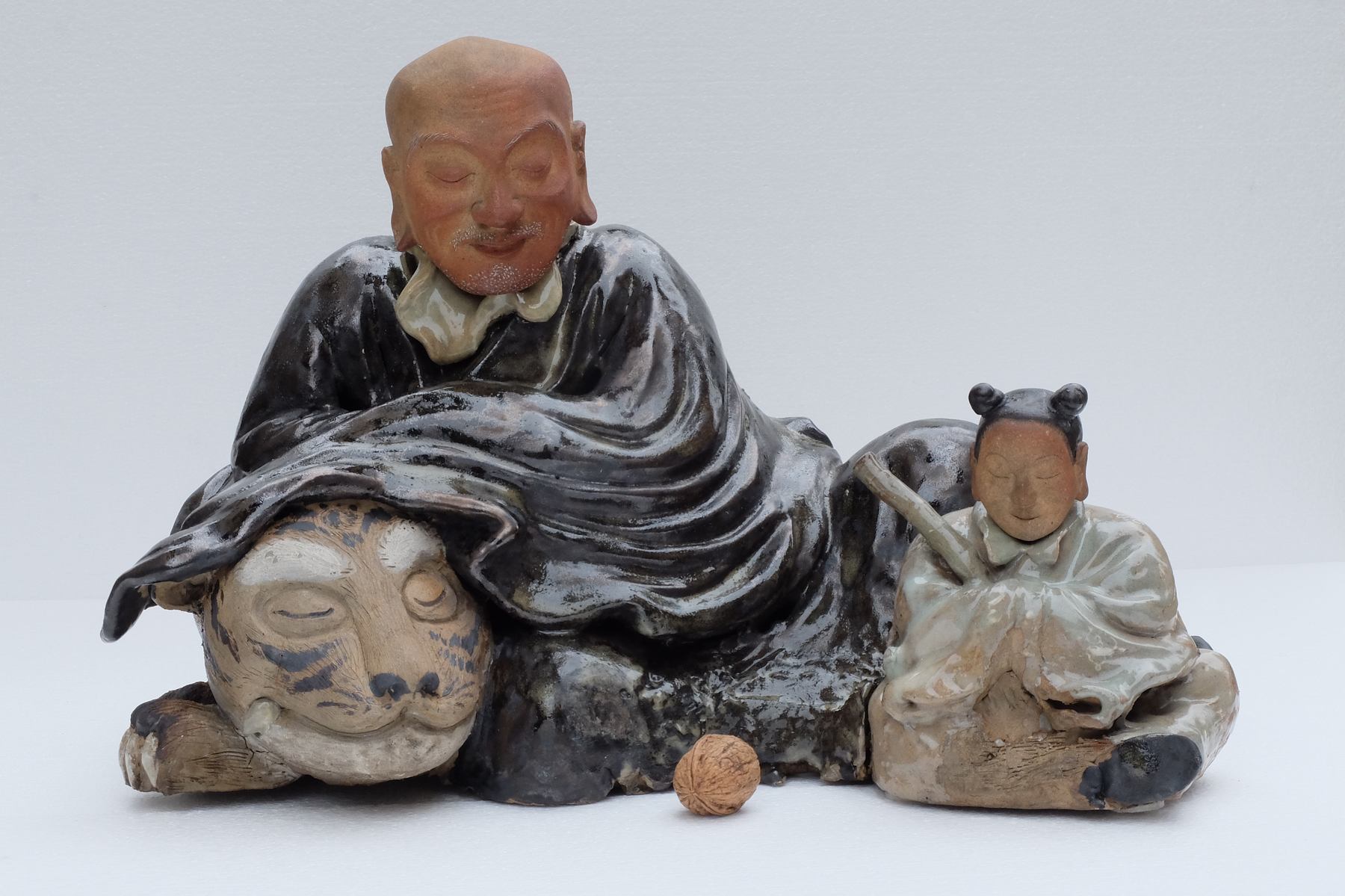
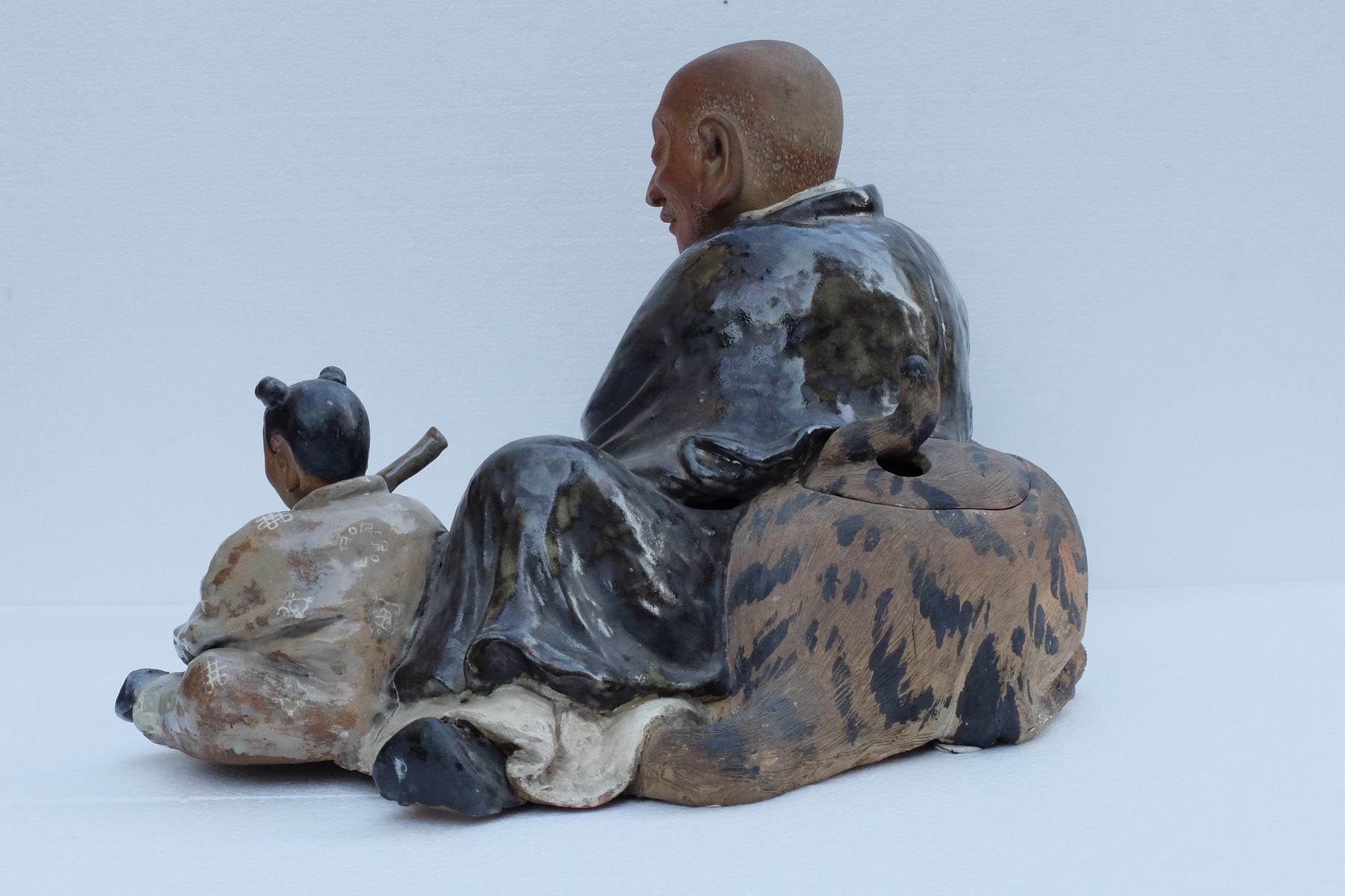
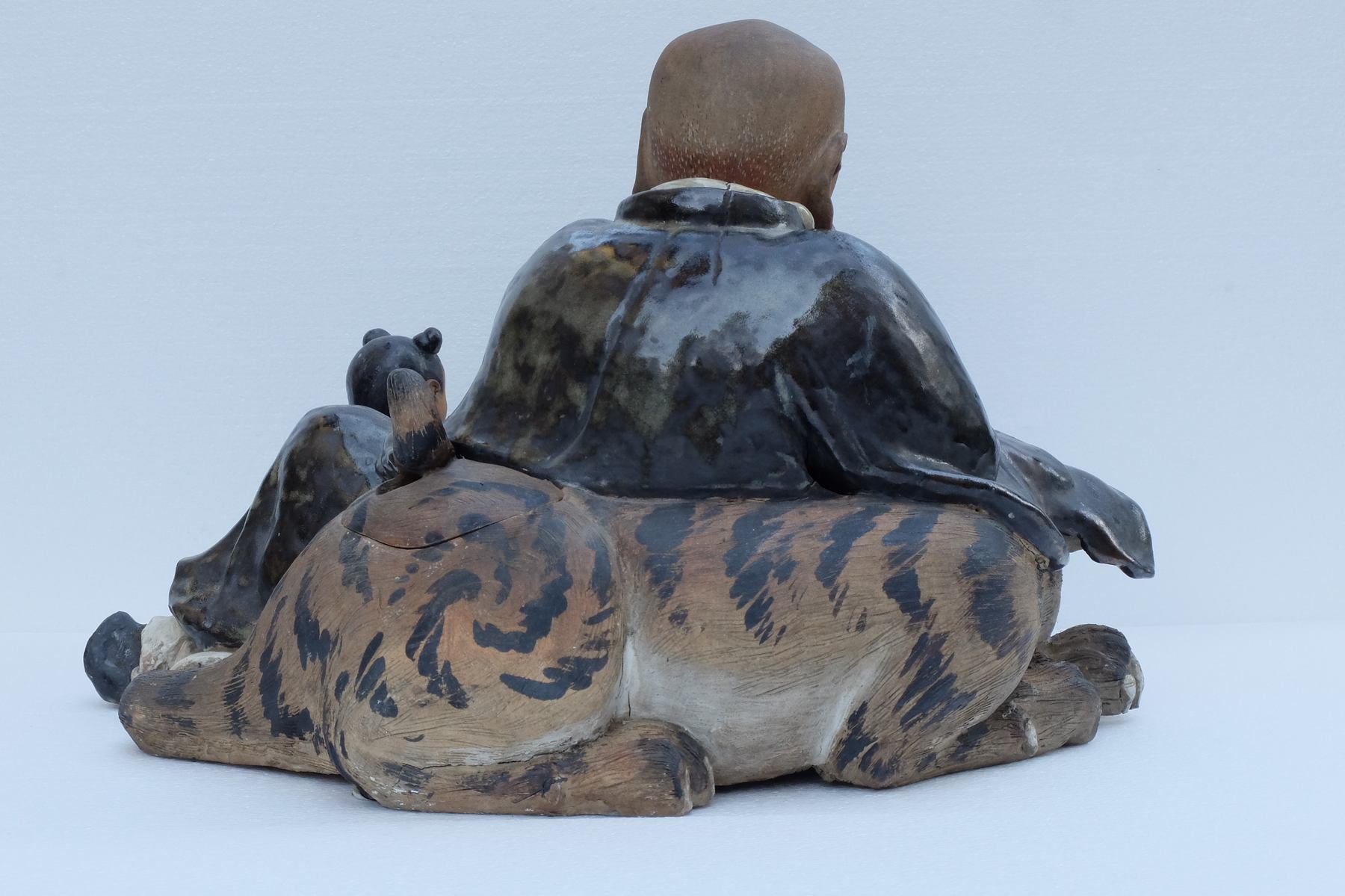
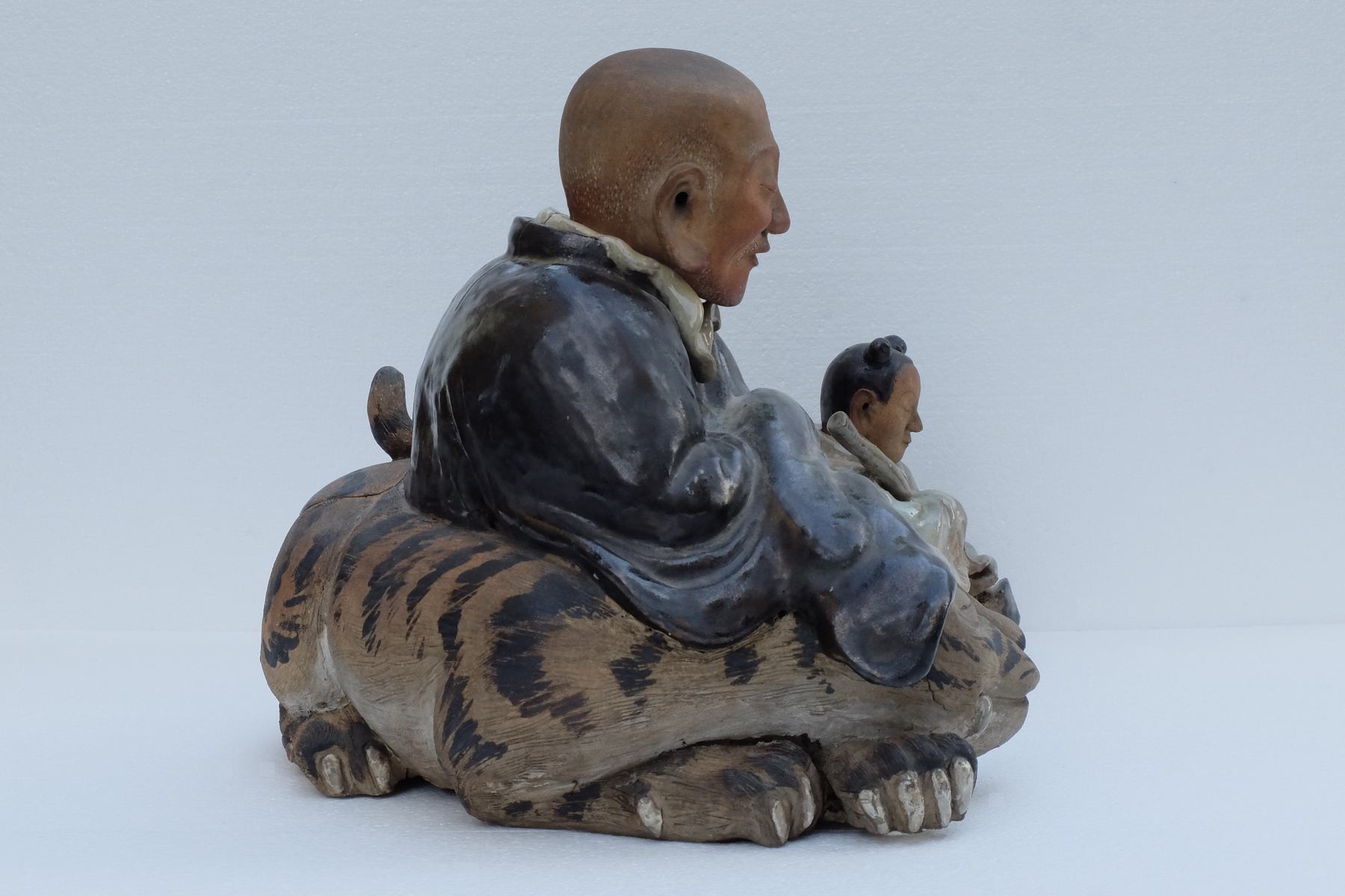
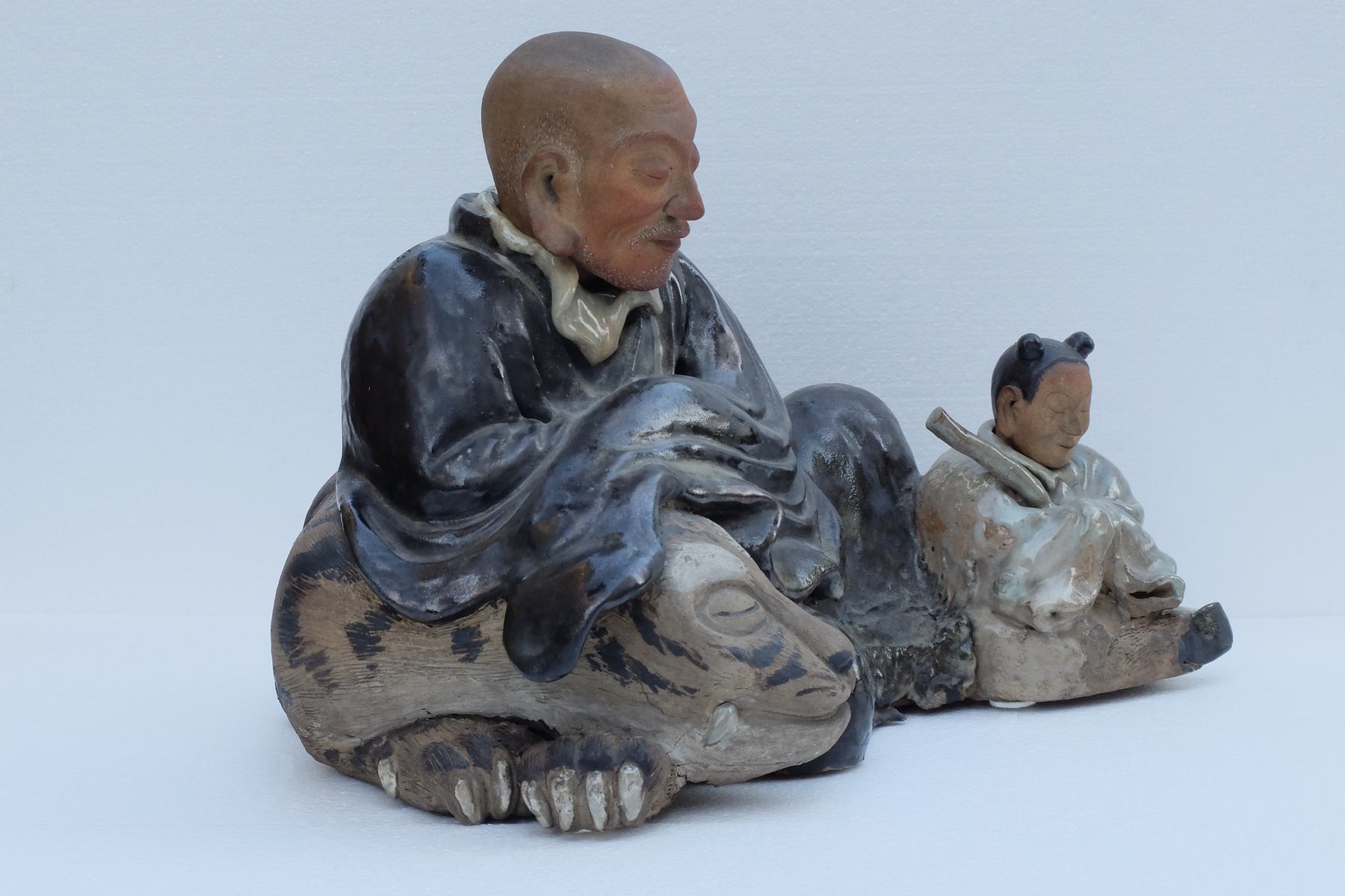
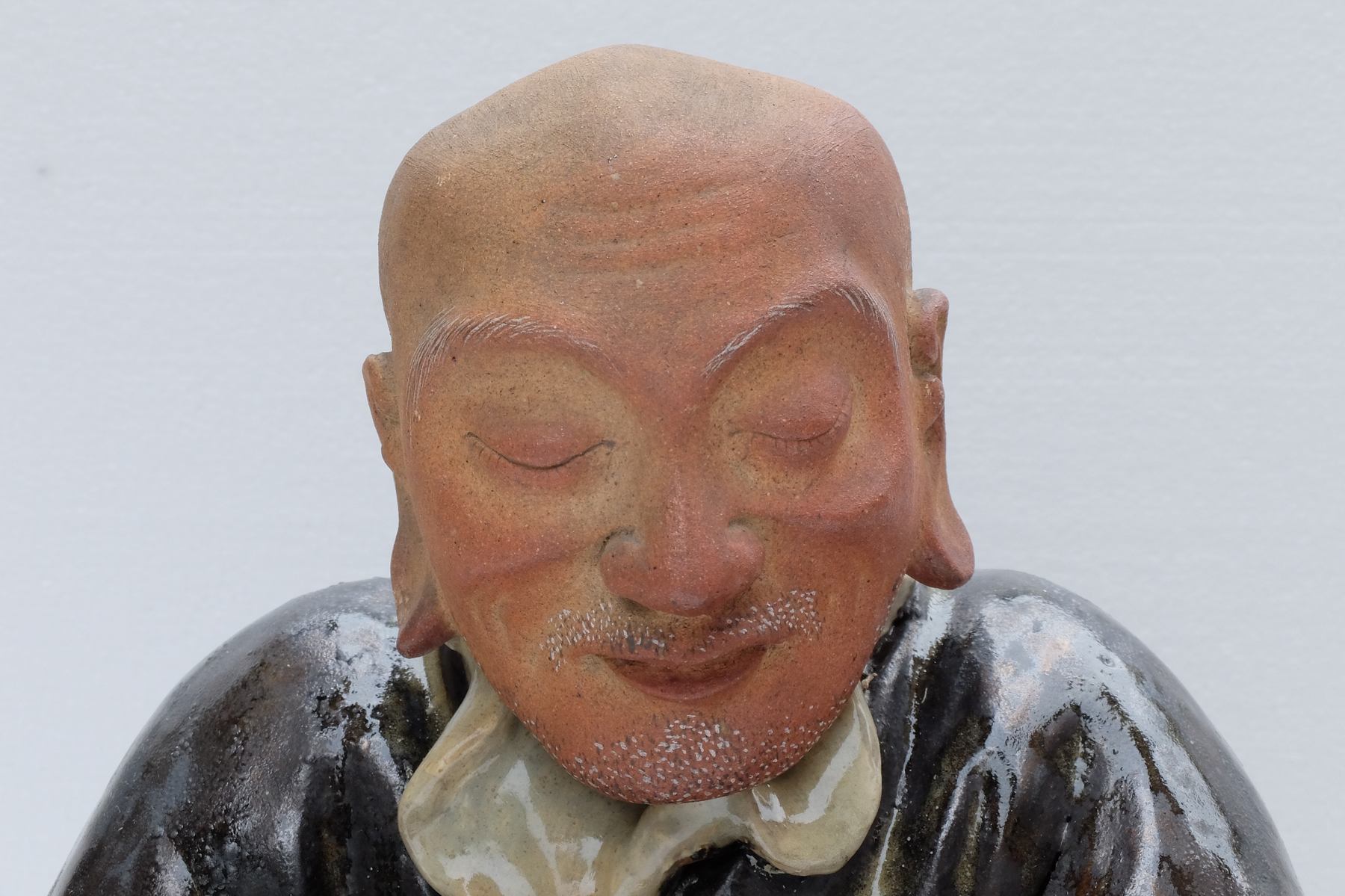
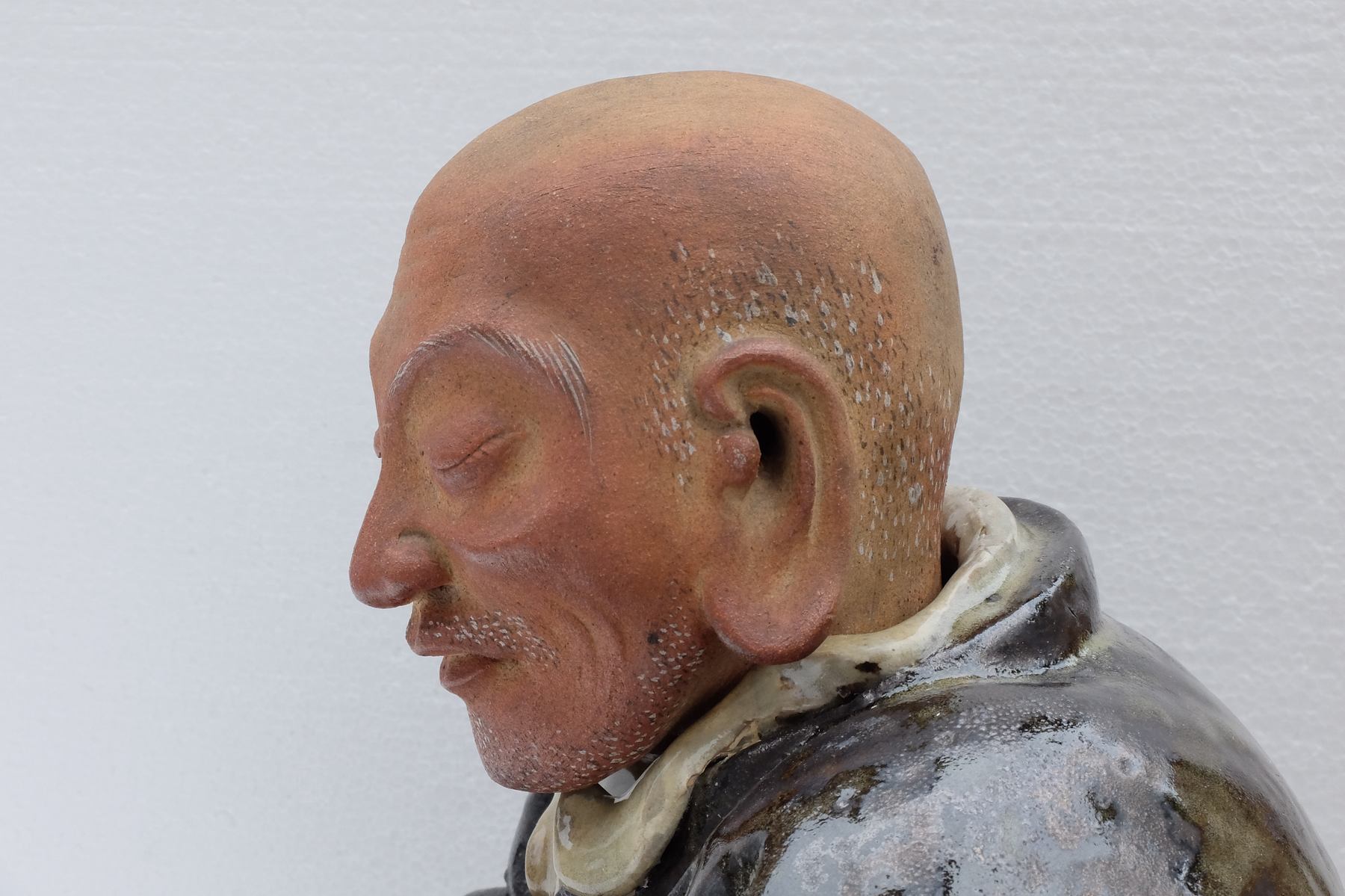
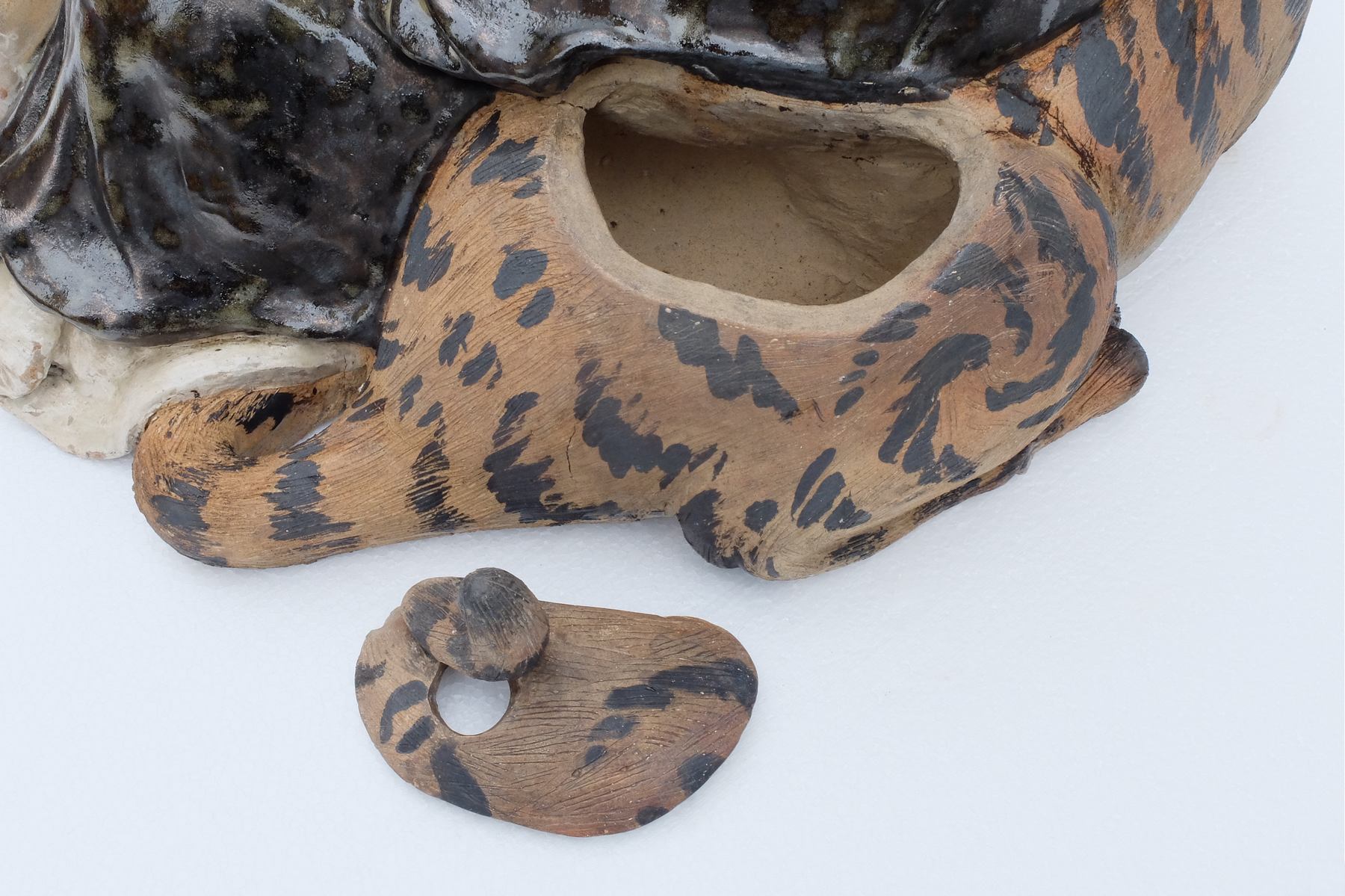
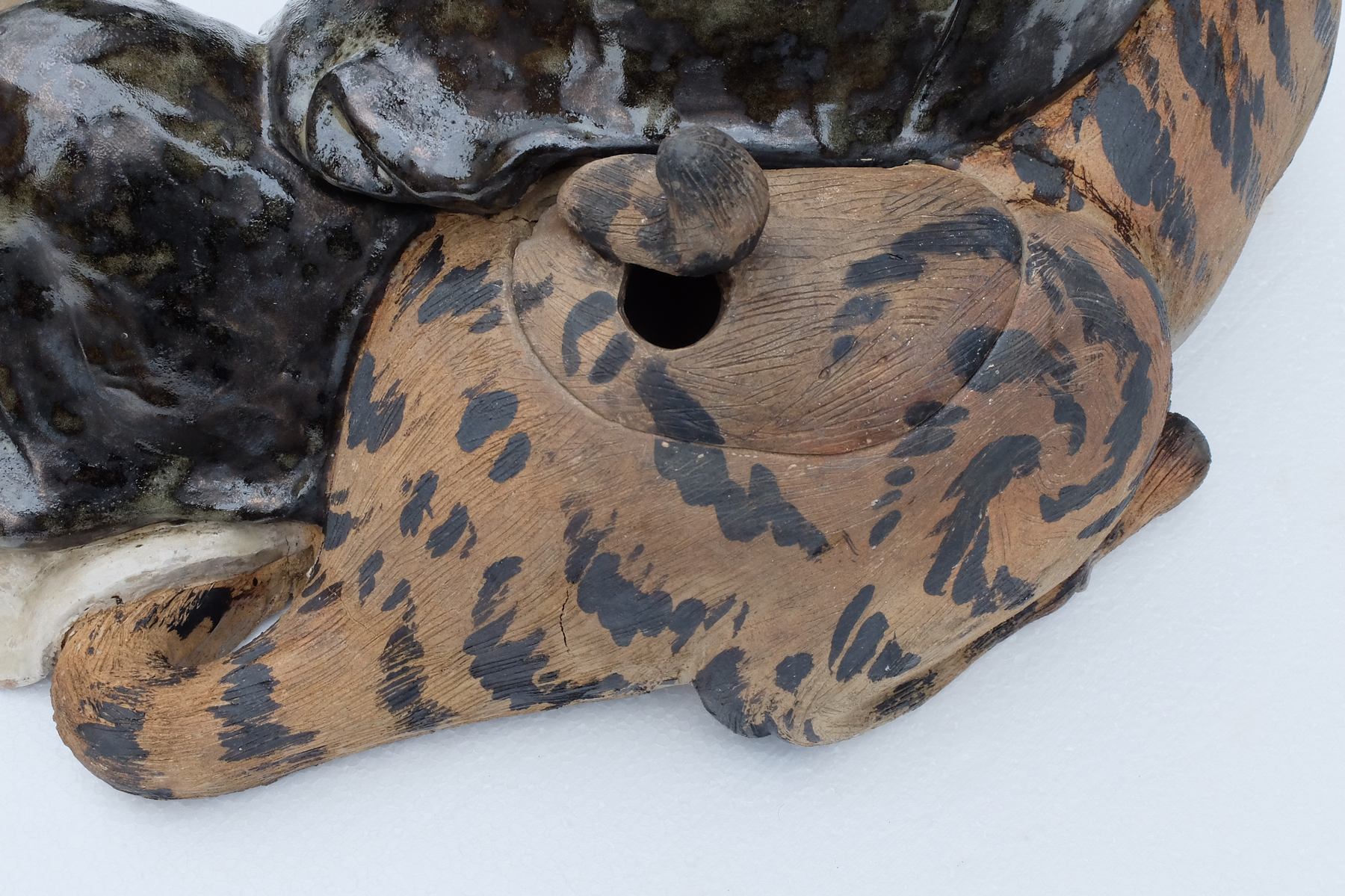
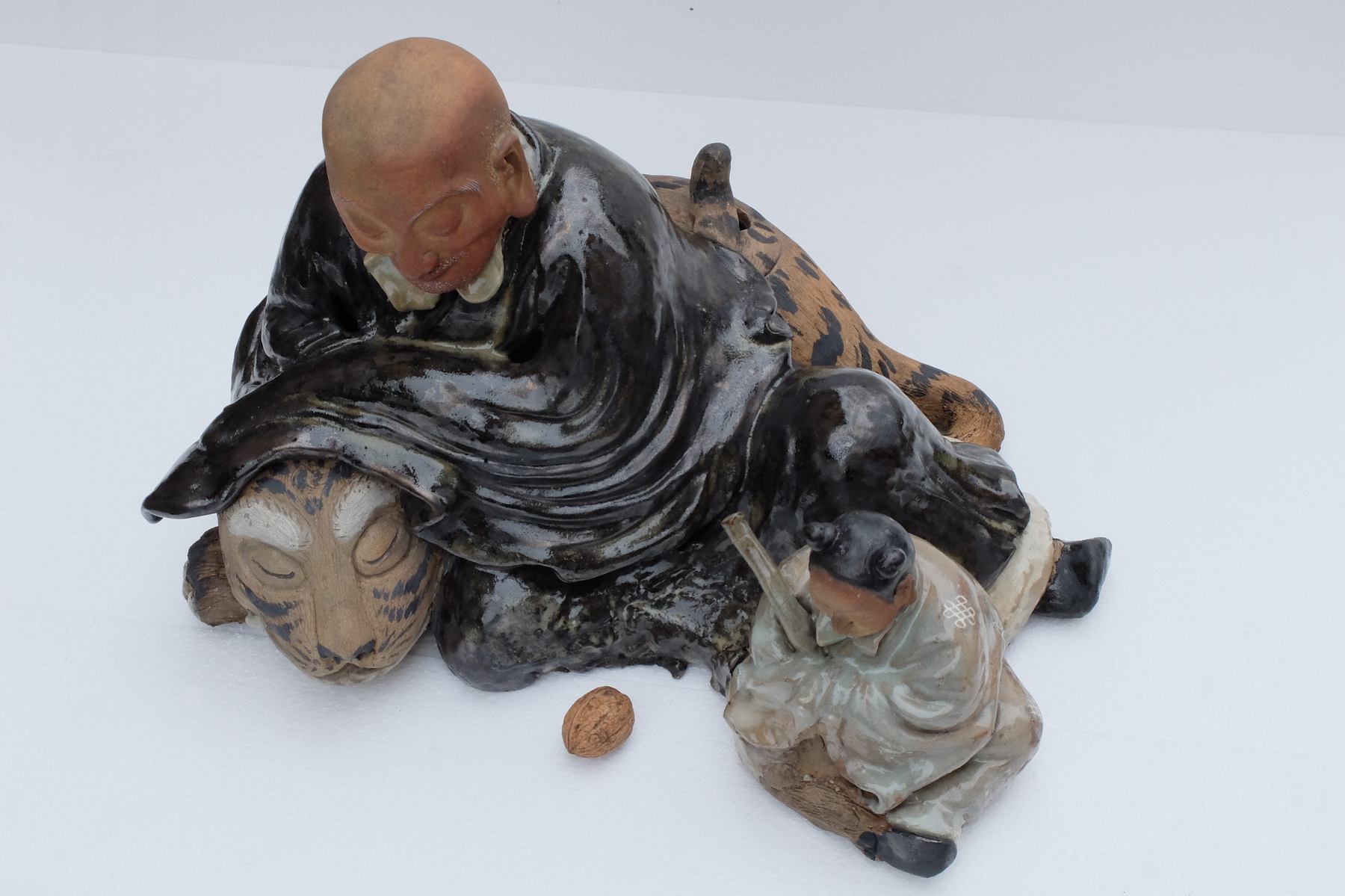
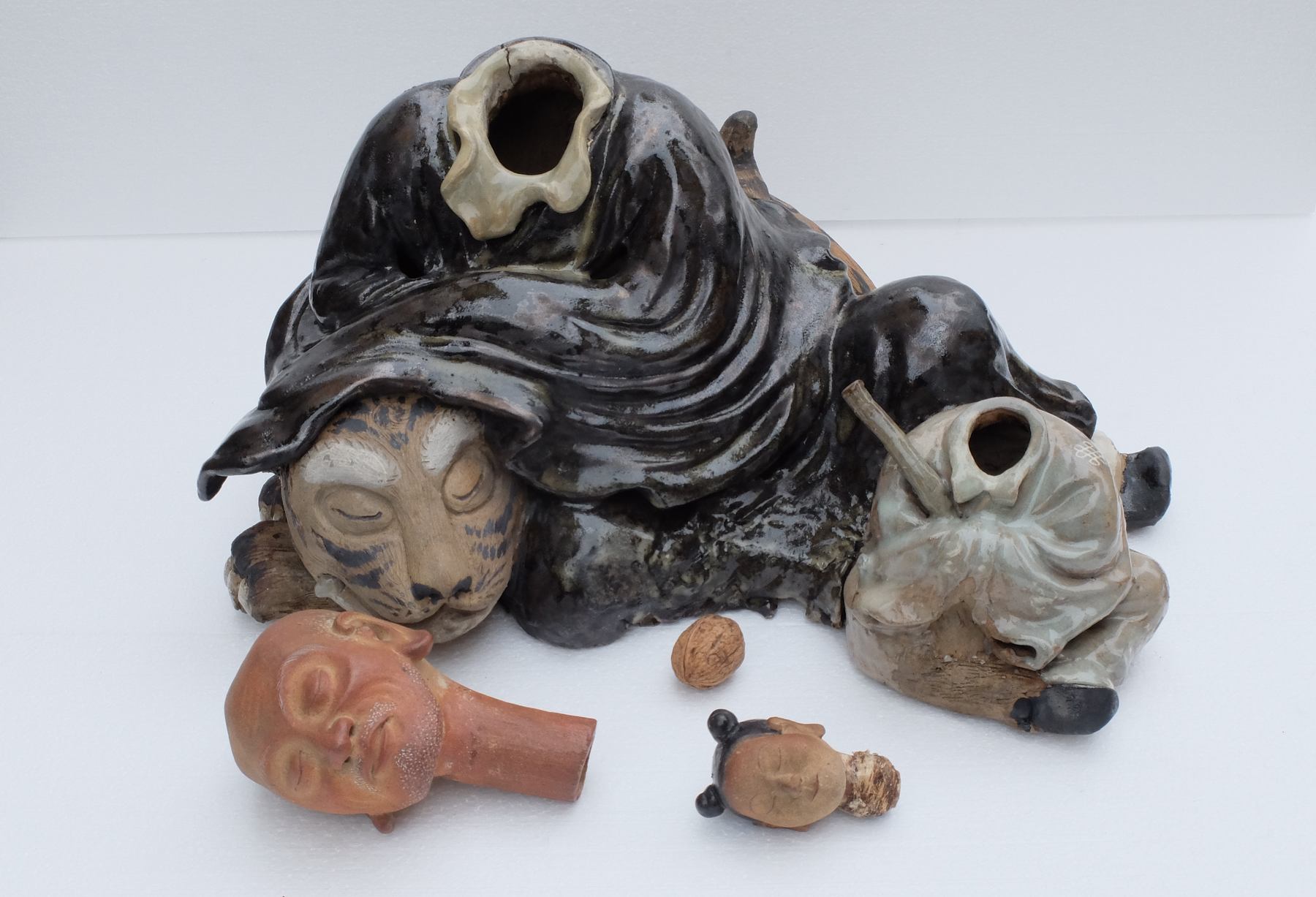
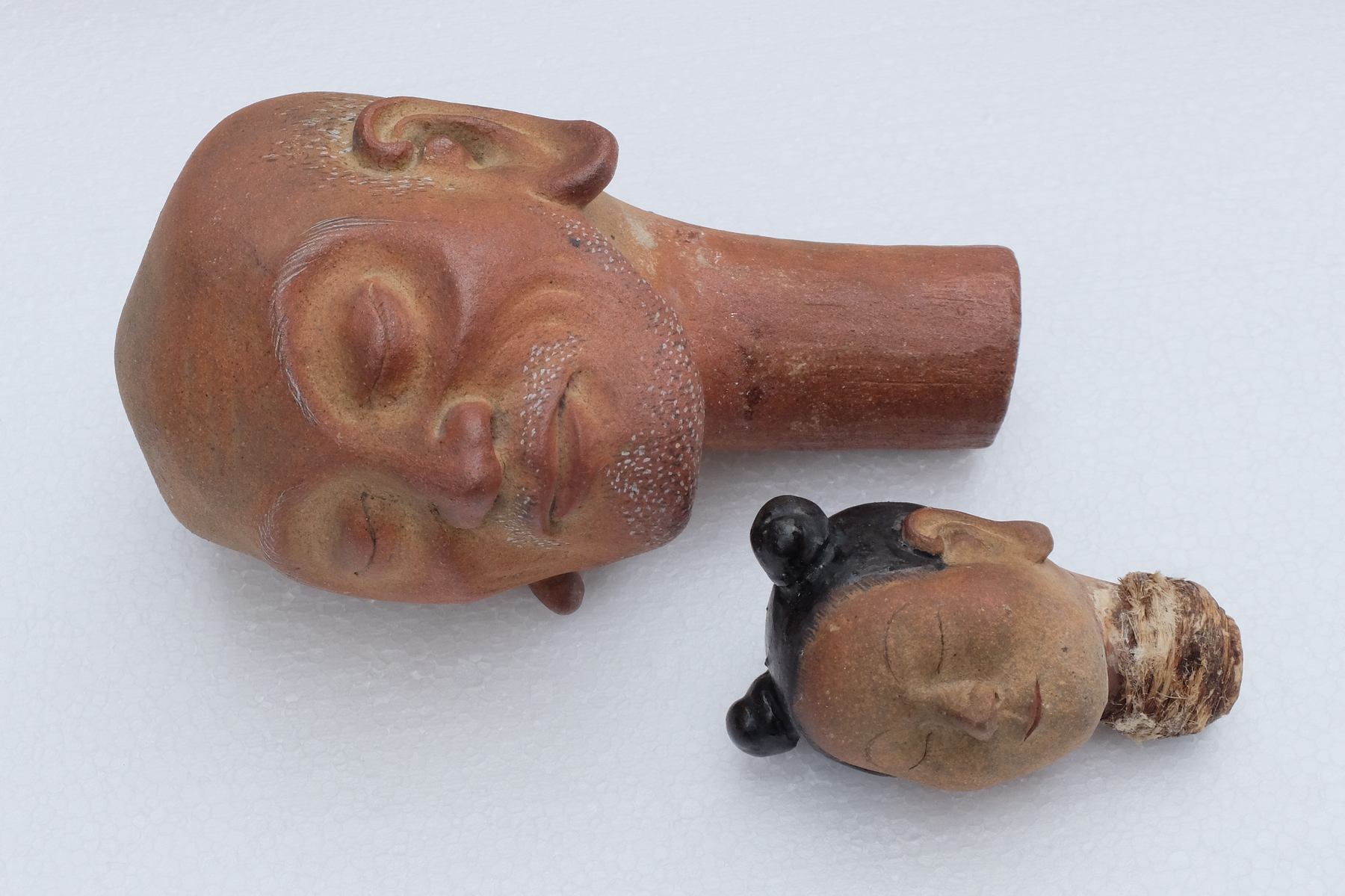
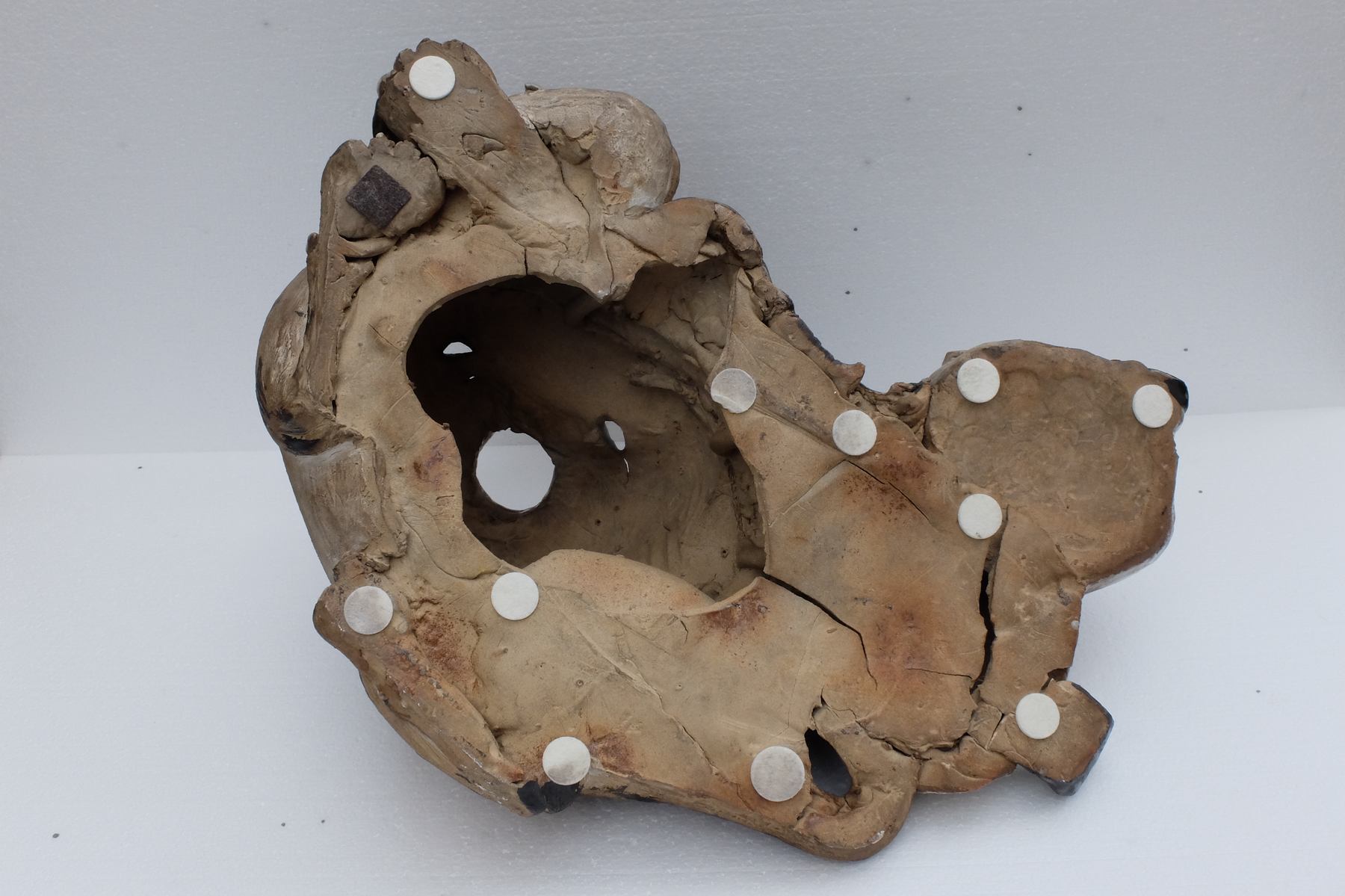
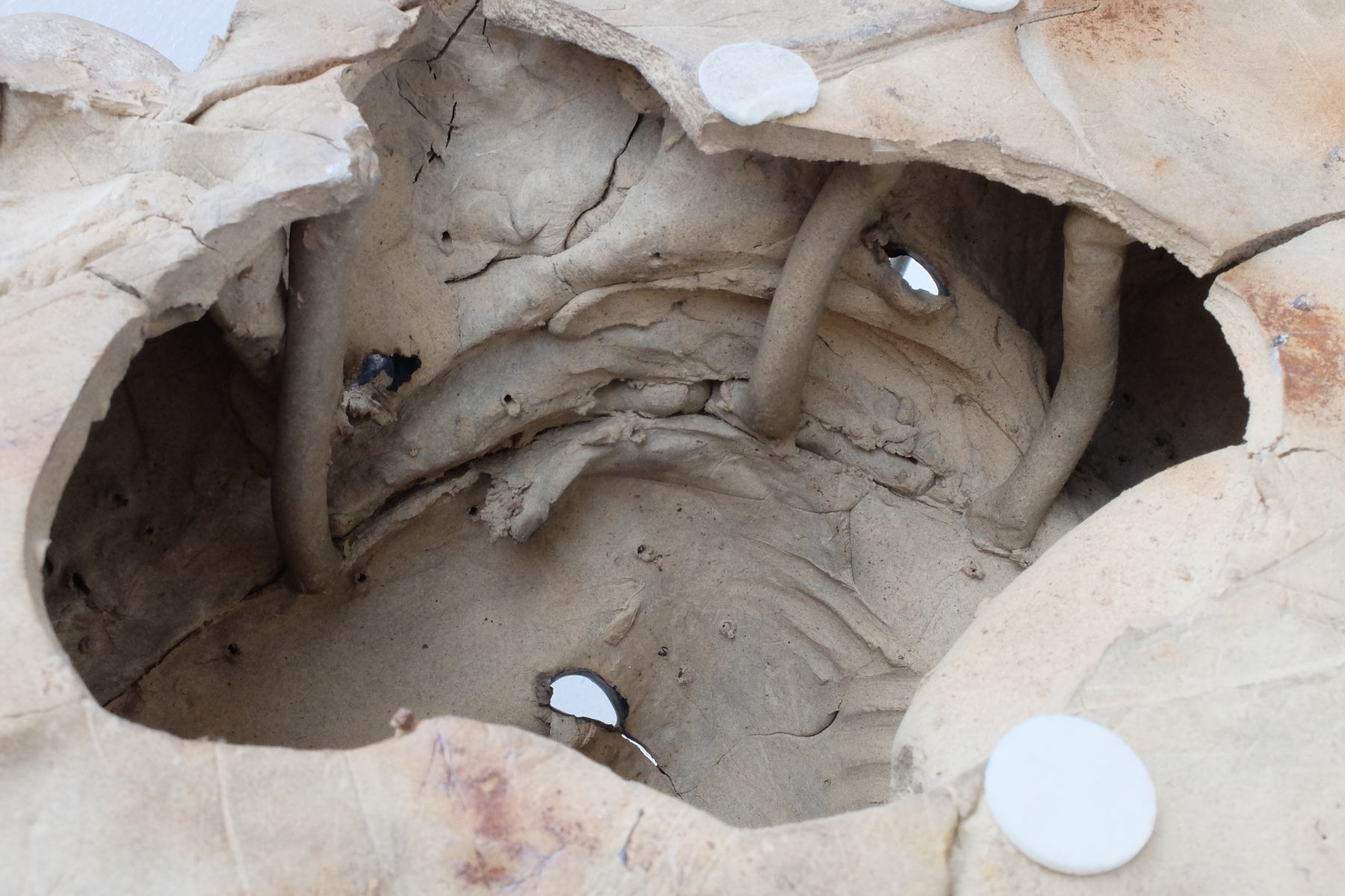
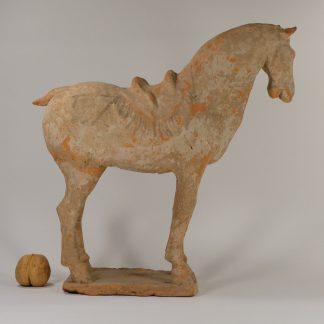


Reviews
There are no reviews yet.